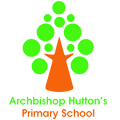COMPUTING
At Archbishop Hutton's we use the iLearn2 online scheme to teach our Computing. We chose this because it is detailed and has a clear path of progression in Knowledge from EYFS to Year Six.
Click here - to explore the knowledge learnt in each year group across the school.
Here is why we have chosen this scheme. (Click on the purple bold links links to take you to the site and explore the detail of the scheme.
The Intent, Implementation and Impact of iLearn2
Intent
The intent of iLearn2 is to help pupils become independent, creative, safe, respectful and problem-solving digital citizens with a broad and transferrable skillset. iLearn2 makes computing fun for pupils, inspiring them to develop skills beyond the classroom and building an awareness of all the opportunities the subject provides.
iLearn2’s Progression of Skills page is the suggested teaching sequence of our activity packs and the skills within them. The page also includes how the activities meet the expectations of the national curriculum programmes of study for Key Stages 1 and 2. It has been designed to make sure pupils learn computing skills from the three recognised aspects of computing (below) within each year of their primary education. This means that pupils will build upon skills and concepts they established from the previous year and develop them further in the current and subsequent year.
For example, pupils will learn how to program keyboard or touch screen inputs in Year 3 to control a sprite in Scratch, then develop this further into a racing game in Year 4 using conditions and variables. Before introducing random variables in Year 5 to make the game unpredictable. Also, basic ebook creation skills can be introduced in Year 2 with text and images and developed further in year 4 and 5 with the addition of hyperlinks and interactive elements.
The three aspects are:
- Computer Science (highlighted orange in the progression) – this covers programming (both block-based and text-based), including computational thinking using web-based software such as Scratch. Pupils across Key Stage 1 and 2 will write code to program physical and on-screen objects, interactive games and use text-based language, such as HTML and Python by the end of Key Stage 2.
- Information Technology (highlighted purple in the progression) – this covers the use of applications to create digital content, including document creation and editing, video making, digital art, graphic design, animation, 3D modelling and website building.
- Digital Literacy (highlighted green in the progression) – covers skills to find, evaluate, utilise and share using technologies and the Internet. This includes important e-safety and internet research skills, as well as an understanding of computer networks in Key Stage 2.
Implementation
iLearn2 includes activity packs with step-by-step, easy to follow video tutorials and challenges for both teachers and pupils to access. This has many advantages including:
- Pupils can learn computing skills at their own pace, developing independent learning skills with opportunities to continually review and revisit the skills covered.
- The pupil activity codes help teachers provide pupils with specific activities, meaning pupils can access resources and content suitable for their individual ability and needs.
- The pupil activity packs are available across Key Stage 1 and 2. Key Stage 1 pupils learn how to apply the skills they learn in the tutorials to their own work. Key Stage 2 pupils apply and develop the skills they learn in the tutorials into their own projects, independently improving and evaluating their work.
- The video tutorials are compatible with Google Chrome’s Live Caption tool, meaning pupils with hearing loss can access the video content.
The Embed page on iLearn2 provides pupils with cross-curricular projects, helping apply computing skills across the Key Stage 1 and 2 curriculum. The activity packs cover skills for the three most common platforms; Microsoft, Apple and Google. In many packs there are tutorials for all three, allowing pupils to learn skills regardless of the platform used in the school and to prepare pupils for all possibilities in the next steps of their education.
Impact
Each iLearn2 activity pack includes different resources to capture and track pupil learning:
- Downloadable assessment grid for each activity pack to track pupil understanding of each skill.
- Printable ‘unplugged’ challenge sheets/cards for pupils to demonstrate their understanding of key vocabulary and the application of skills.
- The teacher view of each pack includes advice and tutorials that cover how pupils can save their work or, in some cases, how it can be captured in the software being used.
 Archbishop Hutton's V.C Primary School
Archbishop Hutton's V.C Primary School